Physical Activity Vs Exercise: 8 Key Differences & Benefits
Take the right decision for your precious body as you learn more about these procedures.
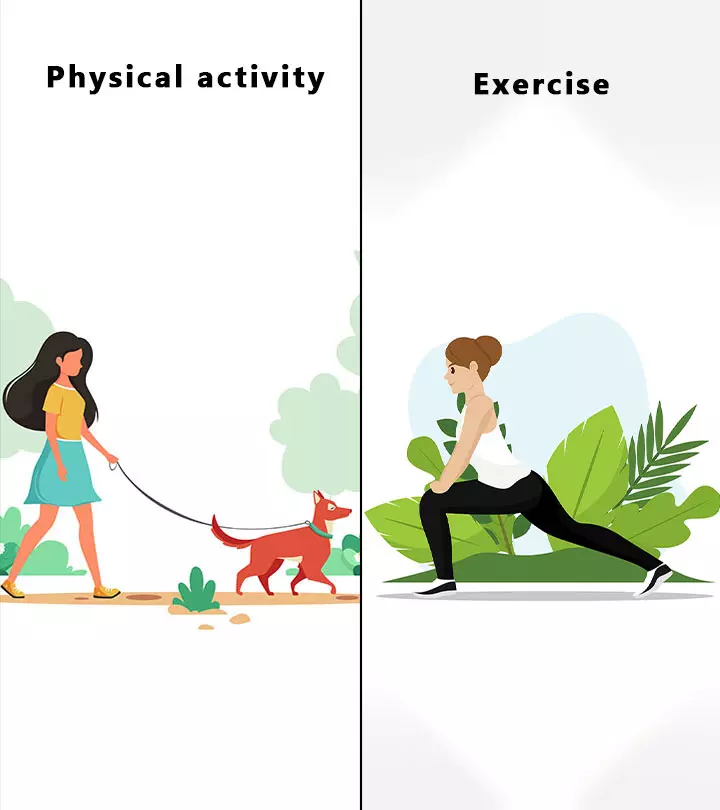
Image: Shutterstock
Physical activity Vs. exercise – what could the difference be? Most of us are often confused between physical activity and exercise. Some also believe that physical activity doesn’t warrant the need for daily exercise. But what does science say? How is physical activity different from exercise? What benefits do both offer? This confusion can lead to misunderstandings about their different roles in health and wellness. It is important to clarify these terms for anyone aiming to improve their lifestyle. Here, we answer your queries and help you start your journey to optimal health. Keep reading.
In This Article
Physical Activity Vs. Exercise: What’s The Difference?
Physical activity and exercise have different connotations. The intention and purpose behind them is the defining difference.
Dr. Dave Candy, a Physical Therapist, says, “All exercise is physical activity, but not all physical activity is exercise. Exercise is a type of physical activity done for the primary purpose of leisure (i.e. sports) or improving health. However, for people who are less physically active, the term exercise can also be intimidating as it brings about thoughts of being hard, sweating, and possibly causing some discomfort.” Let’s take a closer look at the difference between both.
Physical Activity
Physical activity is any bodily movement produced by the contraction of skeletal muscles that expends energy. Physical activity may improve your health and reduce the risk of developing type 2 diabetes, cancer, and cardiovascular disease (1). Additionally, physical activity reduces the risk of premature death by many diseases (2). There are many different types of physical activities, like dancing, climbing stairs, doing household work, or gardening. You can choose any physical activity depending on your age, comfort, and availability of time.
The amount of energy required to accomplish any physical activity can be measured in kilocalories (3). Every activity you perform that results in a calorie burn is termed physical activity. The activities can vary from person to person and are highly associated with one’s occupation and age. Physical activity is also associated with improved mental health and well-being (4).

Regular physical activity may also boost one’s immune system (5). Such activity doesn’t always have to be planned, and often results in significant calorie expenditure. That said, it is not the same as exercise.
Types Of Physical Activities:
- Walking
- Running or jogging
- Cycling
- Swimming
- Dancing
- Yoga
- Hiking
- Gardening
- Playing sports
 Did You Know?
Did You Know?Exercise
Exercise is mainly defined as training your body to improve its functions and gradually increase its fitness. Exercise needs to be planned and executed as a regime for visible results. It is a subcategory of physical activity that is planned, structured, repetitive, and purposefully focused on the improvement or maintenance of one or more components of physical fitness (7). Tasks regularly performed in a planned manner are termed exercises.
Anthony Puopolo, a Physician, says that physical activity is exactly the word it connotates: movement. Walking, standing up and sitting down, and regular day-to-day tasks can be called “physical activity.” Exercise, however, is something that produces an aerobic or anaerobic response. It places strain on your body so that your body heals itself and grows stronger. It also keeps your body running efficiently and maintains your health.
Alena Elizabeth writes about health and self-love topics in her blog. She writes, “I was doing mostly cardio, 45 minutes to 1 hour+ on the elliptical, followed by some Abdominal exercises or a little work with the machines. This lasted for a couple of months and while it definitely helped me lose some initial weight, in addition to completely changing my eating habits, I still felt weak and was having so much trouble toning up (i).” She then slowly moved up to weight training with inspiration from fitness influencers.
Types Of Exercises:
- Cardiovascular exercises (e.g., running, cycling, swimming)
- Strength training (e.g., weightlifting, resistance band exercises)
- Flexibility exercises (e.g., yoga, stretching)
- Balance exercises (e.g., tai chi, stability ball exercises)
- High-intensity interval training (HIIT)
- Pilates
- Core exercises (e.g., planks, crunches)
- Endurance exercises (e.g., long-distance running, rowing)
- Bodyweight exercises (e.g., squats, push-ups)
- Functional exercises (e.g., kettlebell swings, lunges)
Both physical activity and exercise have proven benefits that are listed in the next section. Continue reading to know more.
Key Takeaways
- Physical activity is any form of body movement made by the contraction of skeletal muscles. It improves health and reduces the risk of developing medical conditions.
- Exercise involves planned training to improve your body’s functioning and increase its fitness.
- Being physically active and exercising daily provides benefits like better sleep, reduced hypertension, and more.
- Certain tips can help you start being active – these include warming up before a workout and choosing comfortable exercises, among others.
8 Health Benefits Of Staying Physically Active And Exercising Regularly
1. May Reduce The Risk Of Cardiovascular Disease
Exercising and being physically active help improve cardiovascular health. Exercising regularly may reduce the risk factors that contribute to cardiovascular disease. These include body weight, blood pressure, LDL cholesterol, and insulin sensitivity. People diagnosed with heart disease reported an earlier return to work after participating in an exercise program. Significant improvements in self-confidence and reduction of stress and anxiety were also observed (8).
A single session of exercise improved myocardial contractility, which, in turn, promoted cardiovascular health (9). Physical activity can also improve endothelial function, which plays a major role in heart health (10).
2. May Help Manage Hypertension
Hypertension may increase the risk of diabetes, may hurt vision, and is also related to obesity (11), (12), (13). Hypertension is also strongly associated with cardiovascular disease and mortality (14). Exercise has been shown to effectively manage hypertension and reduce the associated risk factors (15).
3. May Help Manage Diabetes
A sedentary lifestyle is linked to type 2 diabetes (16). Physical activity can play a significant role in the prevention and management of diabetes, particularly in people who are obese or have impaired glucose tolerance.
Regular exercise was found to promote insulin sensitivity and cardiovascular fitness and muscle strength. However, the outcomes may vary depending on the type of diabetes. Hence, exercise regimes must be tailored to meet the goals of diabetes management (17).
4. May Promote Better Sleep
One of the least talked about benefits of physical exercise is that it promotes better sleep.
Sleep deprivation is associated with many health conditions like obesity, diabetes, cardiovascular disease, hypertension, anxiety, and depression (18).
Studies show that exercise can serve as a means to improve sleep quality. The time of exercise is important for better sleep. In fact, exercising about an hour and a half before bedtime was found to increase the quality of sleep (19).
5. May Offer Many Pharmacological Benefits
Increased levels of physical activity and fitness were found to promote cognitive ability, body weight control, reduced triglyceride levels, and reduced abdominal adiposity (20). Including various forms of exercise and physical activity in your daily life can promote your overall health.
6. May Reduce Stress And Anxiety
Physical activity and exercise significantly reduce stress and anxiety, boost happy chemicals, and improve one’s self-confidence. Regular exercise may also help one manage their physical and mental stress. Exercise leads to the release of norepinephrine and dopamine, which are chemicals that help reduce stress and anxiety (21).
7. May Help Boost Memory
Regular exercise may also help boost one’s memory. Aerobic exercises specifically are proven to improve memory by increasing the size of the hippocampus. This is especially true in late adulthood where the hippocampus shrinks generally. Regular exercise also reduces the risk of cognitive impairment (22). Include aerobic exercises like swimming, cycling, and jumping rope at least thrice a week in your exercise regimen.
8. May Improve Lung Function
People with long-term lung conditions can alleviate symptoms through regular exercise despite the initial fear of breathlessness. While the idea of becoming quickly out of breath is intimidating, avoiding exercise can lead to decreased fitness, making daily activities even more challenging. However, consultation with a doctor or physiotherapist is crucial before starting any exercise regimen to ensure safety and alignment with individual capacity. Gradual progression is key, allowing the body to adapt. Intermittent exercises, such as interval training and alternating brief sessions with rest, can help manage breathlessness and enhance overall lung function (23).
These are the many important benefits of physical activity and exercise. Including physical activity and regular exercise in your daily routine helps create a balanced lifestyle, supporting overall health and well-being. Begin with activities that are easy to manage and gradually increase the intensity to get the most benefits.
What could be challenging is sticking to a regular physical activity or exercise regimen. But worry not – we have listed a few tips in the next section that may help you start exercising and stick to the routine easily.
How To Start Being Physically Active And Exercise Regularly
- Always start with a short duration, be it physical activity or exercise. Starting with longer durations right away may make you feel drained out and lethargic.
- Start being physically active by taking stairs instead of elevators, taking short walks in between work, and walking while answering phone calls. These minimal efforts can give a boost to your exercise regimen. There are proven benefits of walking. It aids weight loss, increases lung capacity, and reduces stress levels. It is easy to incorporate in daily life, making it a hassle-free but effective physical activity.
- At the start of your exercise routine, choose only the workouts that you find comfortable. Do mild cardio exercises at home such as squats. You may gradually challenge yourself with the other difficult workouts.
- Plan your day. This has a great impact on your exercise routine. It also helps you stick to your exercise routine.
- Stick to a healthy diet and increase your protein intake after consulting your doctor.
- Hydrate adequately to combat dehydration while exercising.
- Warm-up before every workout. It helps in maintaining sustainability.
- Stand while you work at least 30 minutes a day.
- Clean your house thrice a week. This can be an effective physical activity.
- Start with basic yoga and increase the duration gradually.
- Set achievable fitness goals to stay motivated and track your progress. Start with small targets and gradually increase them as you build confidence and stamina.
 Pro Tip
Pro TipIn a survey conducted in 2016 involving 2,820 US adults, exercise frequency varied among respondents. The findings revealed that 20% of adults exercised daily, while another 20% exercised roughly every other day. Additionally, 19% engaged in exercise one or two days a week, with 12% exercising a few times a month. Surprisingly, 20% reported almost never exercising.
Exercise and physical activity offer important benefits. But do not start any vigorous exercise right away. Always start slow. Speak to your doctor before starting any workouts.
There is a significant difference between physical activity and exercise, though both are good for the health of an individual. Simply put, exercise is a subset of physical activity. If you undergo enough physical activity as part of your occupation or hobby and exercise frequently, the benefits are all the more interesting. This combination may help reduce the risk of cardiovascular disease, control high blood pressure and blood glucose levels, reduce stress and anxiety, and promote sleep quality. So, exercise for at least 15-20 minutes a day even if you are otherwise physically active.
Frequently Asked Questions
Can physical activity replace exercise for overall health benefits?
While physical activity can certainly improve health, regular exercise offers more targeted benefits, such as building strength and endurance. Both are vital, and a blend of both is optimal for overall health.
Are squats cardio or strength?
Squats can be considered cardio and strength training exercises, depending on how they are performed. For example, multiple squats may make you sweat and breathe heavily, leading you to gain cardiovascular benefits. But typically, they are strength training exercises as they strengthen your lower back.
Are push-ups strength exercise or cardio?
Push-ups are commonly considered strength training exercises as they strengthen your upper body muscles.
Understand the distinction between exercise and activity. in this video. It talks in great detail about the differences in their impact on health, fitness, and overall well-being. Click to know more.
Personal Experience: Source
(i). ACTIVE LIVING: MY FITNESS HISTORY
References
Articles on StyleCraze are backed by verified information from peer-reviewed and academic research papers, reputed organizations, research institutions, and medical associations to ensure accuracy and relevance. Read our editorial policy to learn more.
- Long-term health benefits of physical activity – a systematic review of longitudinal studies
https://bmcpublichealth.biomedcentral.com/articles/10.1186/1471-2458-13-813 - Health benefits of physical activity: the evidence
https://www.ncbi.nlm.nih.gov/labs/pmc/articles/PMC1402378/ - Physical activity exercise and physical fitness: definitions and distinctions for health-related research.
https://www.ncbi.nlm.nih.gov/labs/pmc/articles/PMC1424733/ - Physical Activity Mental Health and Wellbeing of Irish Adolescents During Covid-19 Restrictions. A Re-Issue of the Physical Activity and Wellbeing Study (PAWS)
https://paahjournal.com/articles/10.5334/paah.127 - Physical exercise as a tool to help the immune system against COVID-19: an integrative review of the current literature
https://www.ncbi.nlm.nih.gov/labs/pmc/articles/PMC7387807/ - The International Prevalence Study on Physical Activity: results from 20 countries
https://www.ncbi.nlm.nih.gov/pmc/articles/PMC2674408/ - How is exercise different from physical activity? A concept analysis
https://pubmed.ncbi.nlm.nih.gov/30332516/ - Exercise and Cardiovascular Health
https://www.ahajournals.org/doi/full/10.1161/01.CIR.0000048890.59383.8D - A single resistance exercise session improves myocardial contractility in spontaneously hypertensive rats
https://www.ncbi.nlm.nih.gov/labs/pmc/articles/PMC4568809/ - The effect of physical exercise on endothelial function
https://pubmed.ncbi.nlm.nih.gov/19757859/ - Diabetes and Hypertension: Is There a Common Metabolic Pathway?
https://www.ncbi.nlm.nih.gov/labs/pmc/articles/PMC3314178/ - How does hypertension affect your eyes?
https://idp.nature.com/authorize?response_type=cookie&client_id=grover&redirect_uri=https%3A%2F%2Fwww.nature.com%2Farticles%2Fjhh201137 - Obesity-Induced Hypertension
https://www.ahajournals.org/doi/10.1161/circresaha.116.305697#:~:text=Excess%20fat%20accumulation%20in%20and - High Blood Pressure and All-Cause and Cardiovascular Disease Mortalities in Community-Dwelling Older Adults
https://www.ncbi.nlm.nih.gov/labs/pmc/articles/PMC5059018/ - Exercise as a tool for hypertension and resistant hypertension management: current insights
https://www.ncbi.nlm.nih.gov/labs/pmc/articles/PMC6159802/#:~:text=Regular%20exercise%20reduces%20the%20blood - Sedentary behavior as a mediator of type 2 diabetes
https://www.ncbi.nlm.nih.gov/labs/pmc/articles/PMC4364419/#:~:text=Relatively%20high%20amounts%20of%20sedentary - Physical Activity/Exercise and Diabetes: A Position Statement of the American Diabetes Association
https://care.diabetesjournals.org/content/39/11/2065 - Extent and Health Consequences of Chronic Sleep Loss and Sleep Disorders
https://www.ncbi.nlm.nih.gov/books/NBK19961/ - Interrelationship between Sleep and Exercise: A Systematic Review
https://www.ncbi.nlm.nih.gov/labs/pmc/articles/PMC5385214/ - Exercise acts as a drug; the pharmacological benefits of exercise
https://www.ncbi.nlm.nih.gov/labs/pmc/articles/PMC3448908/ - Benefits need and importance of daily exercise
https://www.researchgate.net/publication/306118434_Benefits_need_and_importance_of_daily_exercise - Exercise training increases the size of the hippocampus and improves memory
https://www.ncbi.nlm.nih.gov/labs/pmc/articles/PMC3041121/?tool - Your lungs and exercise
https://www.ncbi.nlm.nih.gov/pmc/articles/PMC4818249/#
Read full bio of Dr. Dave Candy
Read full bio of Ravi Teja Tadimalla
Read full bio of Aparna Mallampalli









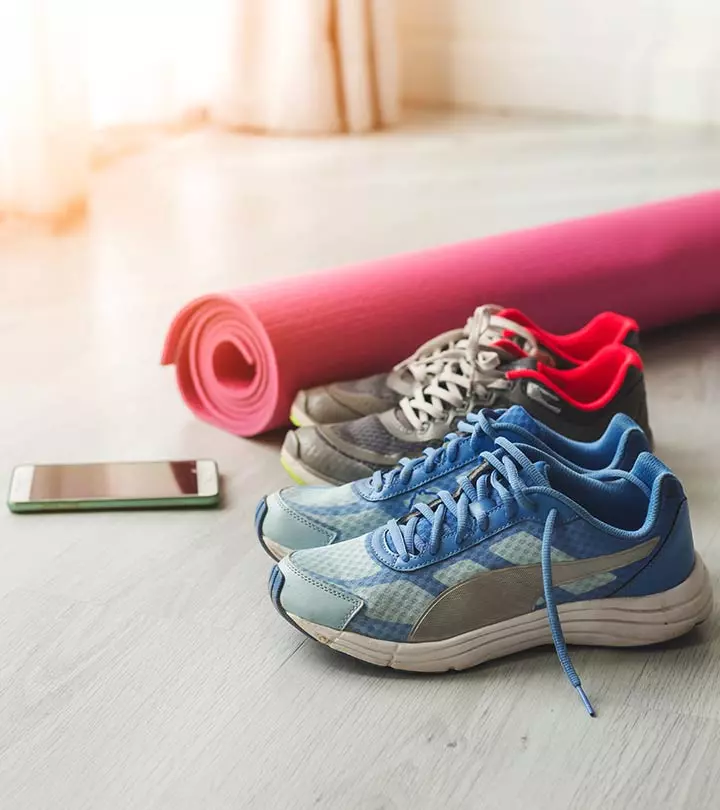

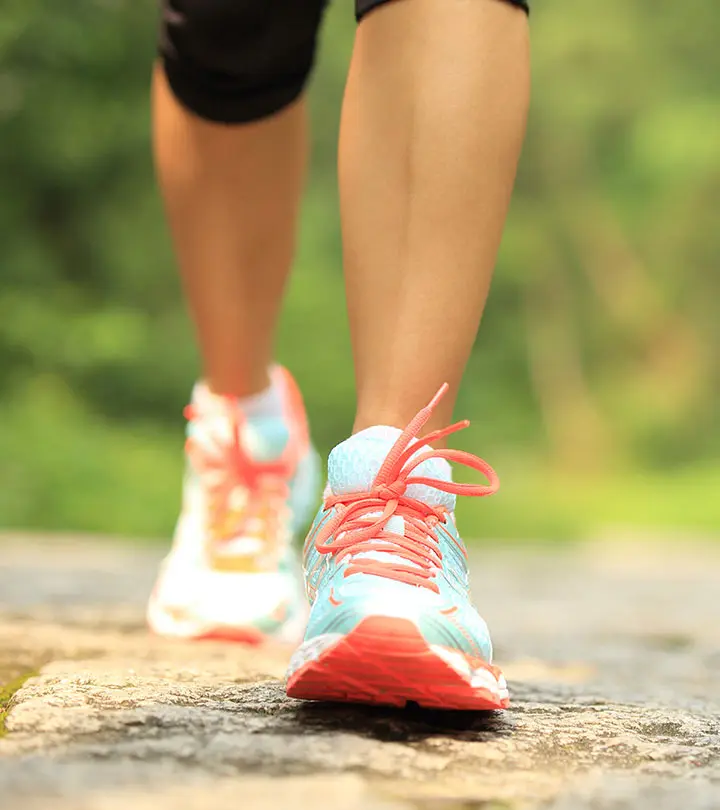
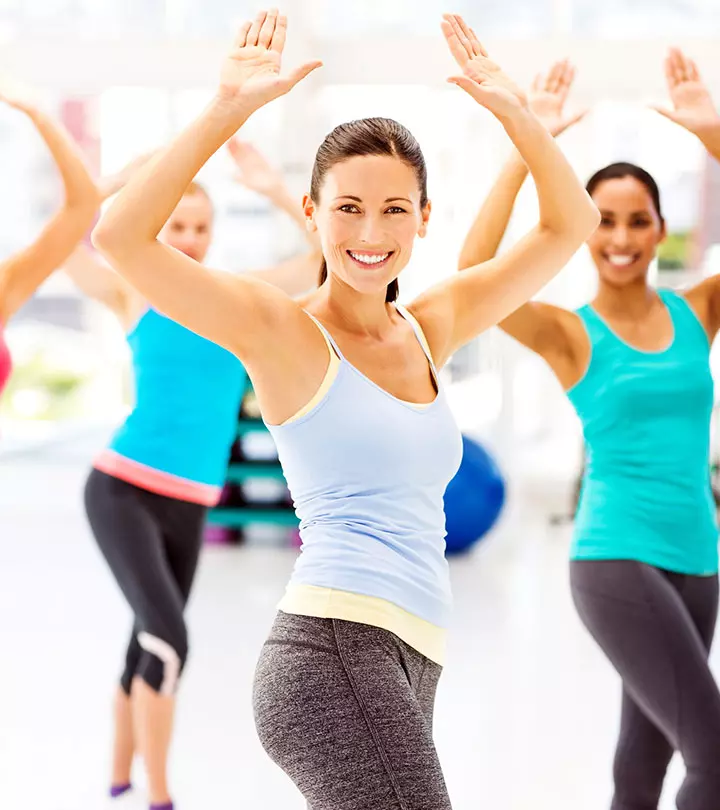
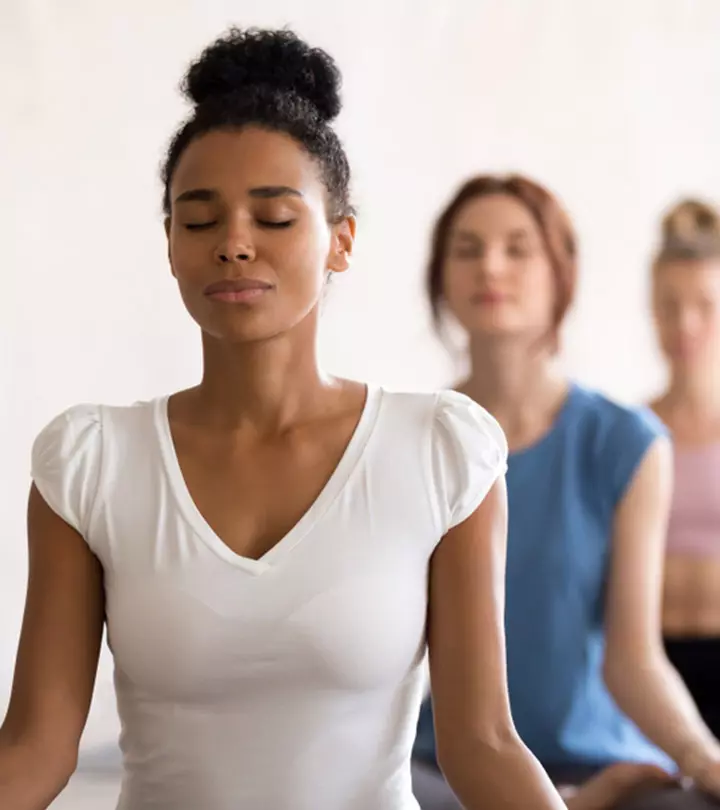
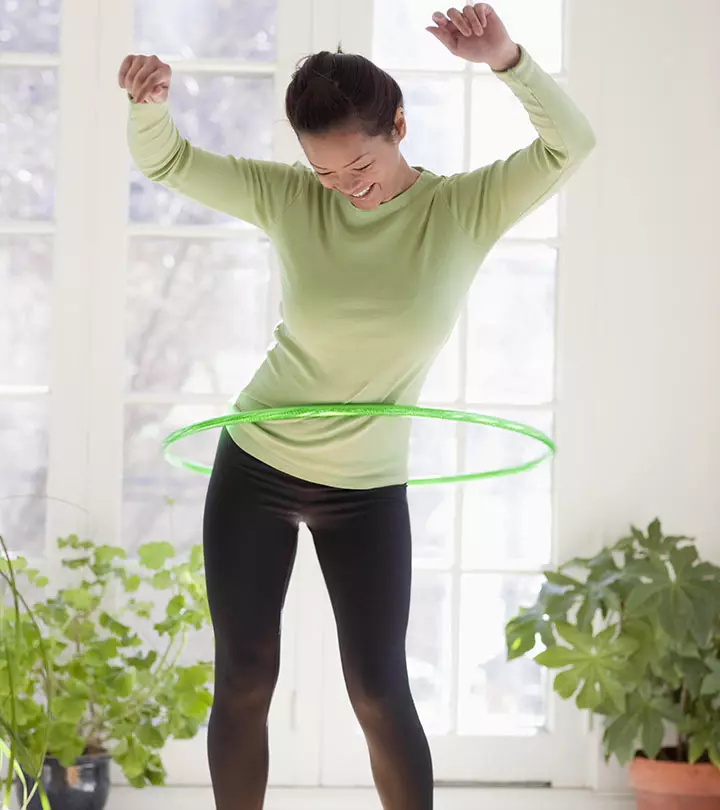
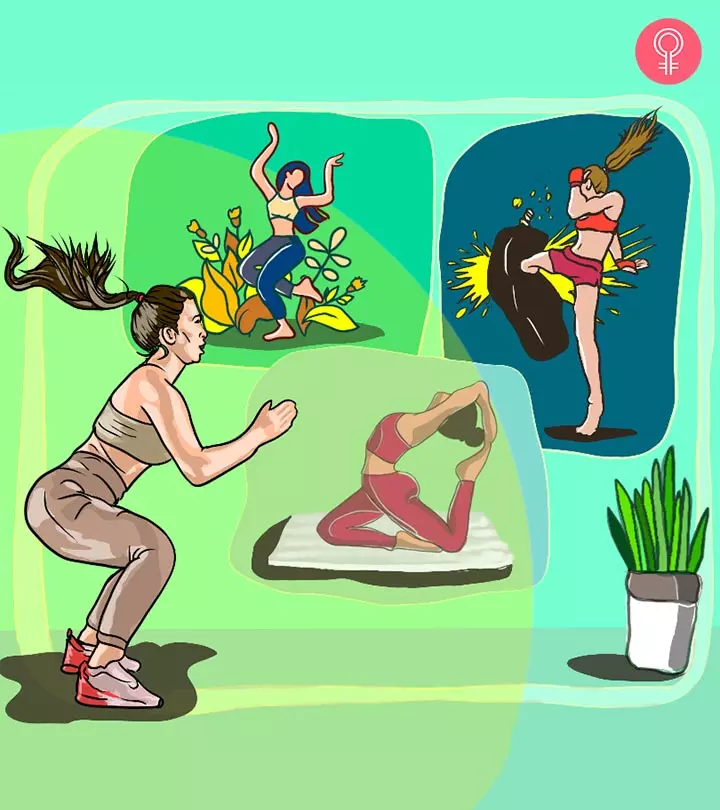

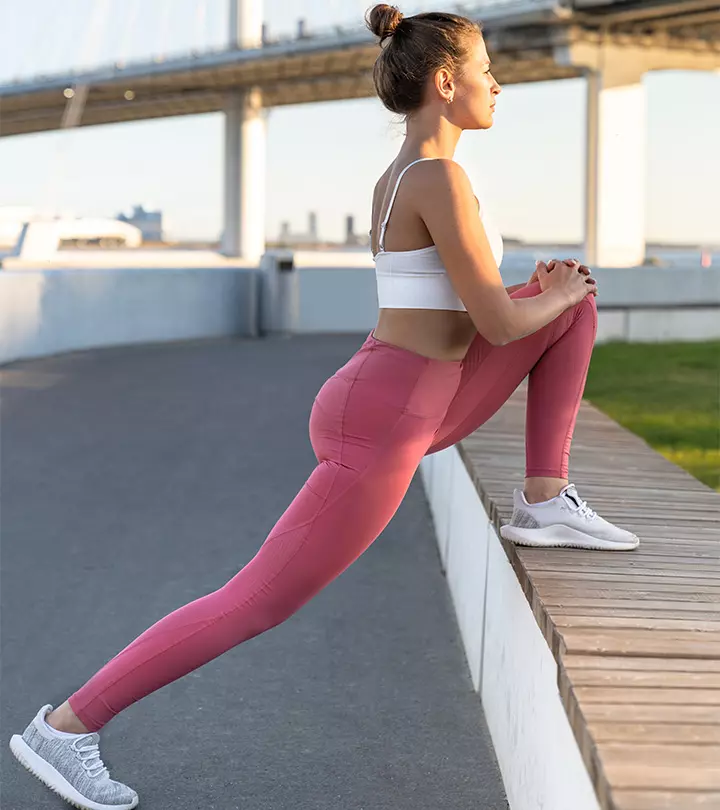
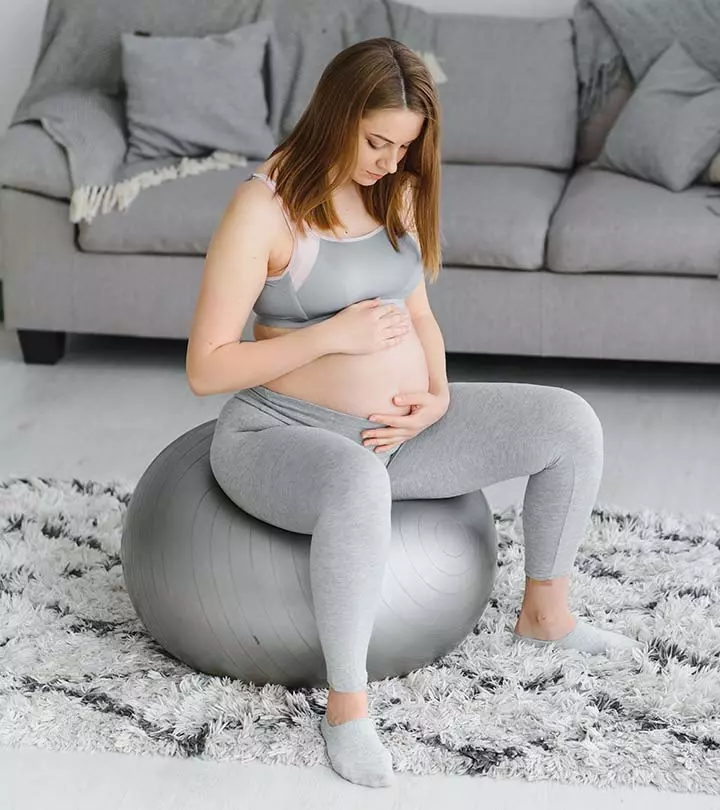
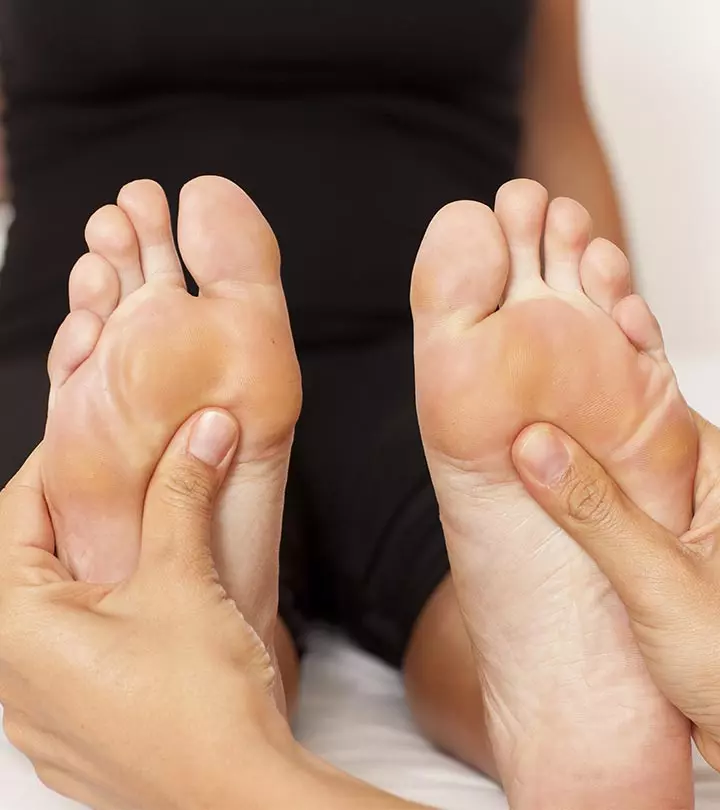

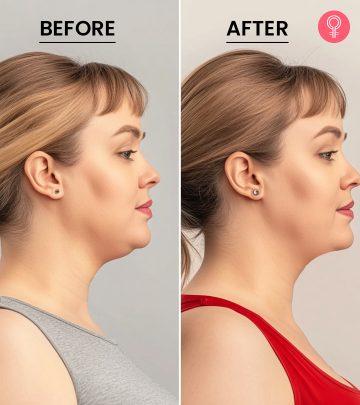
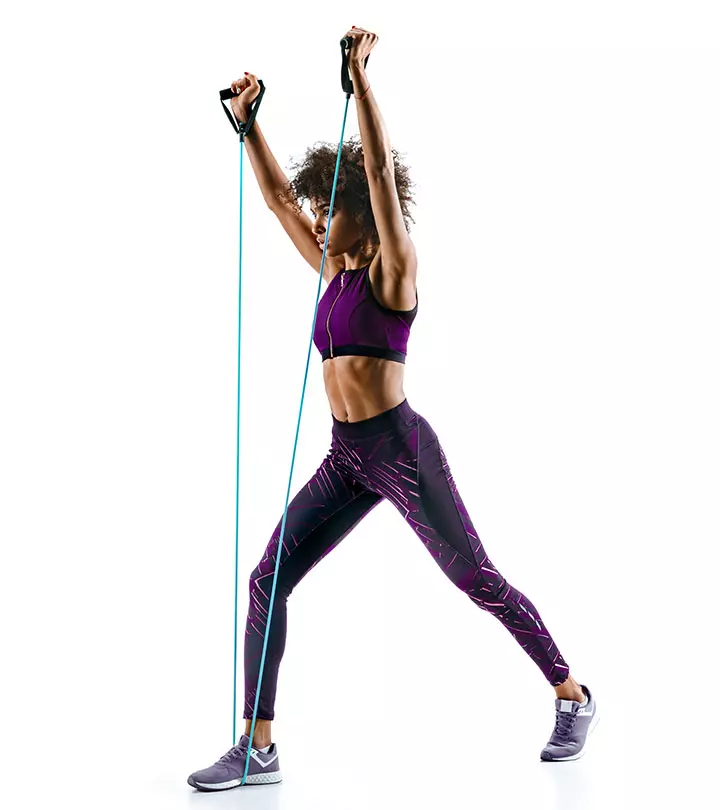
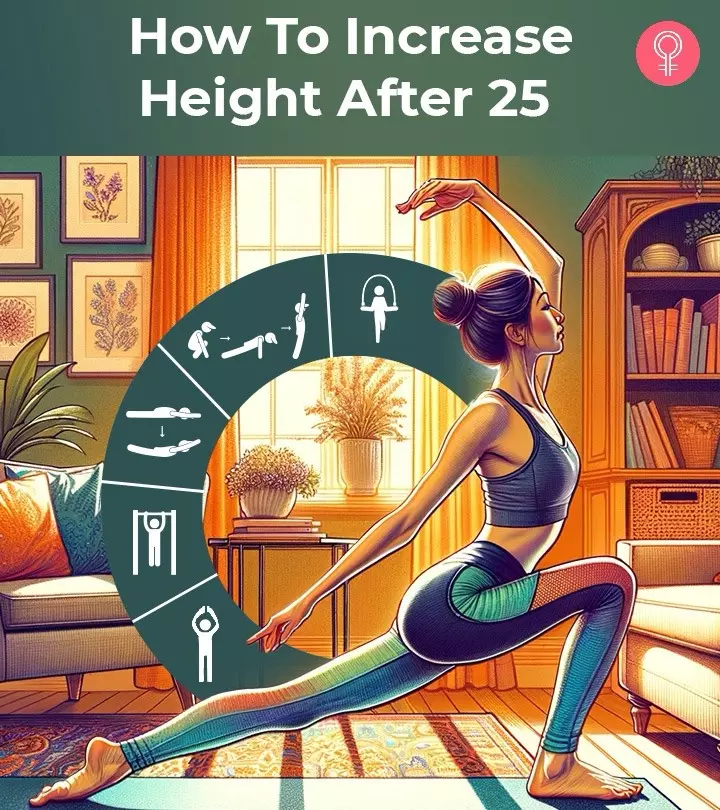

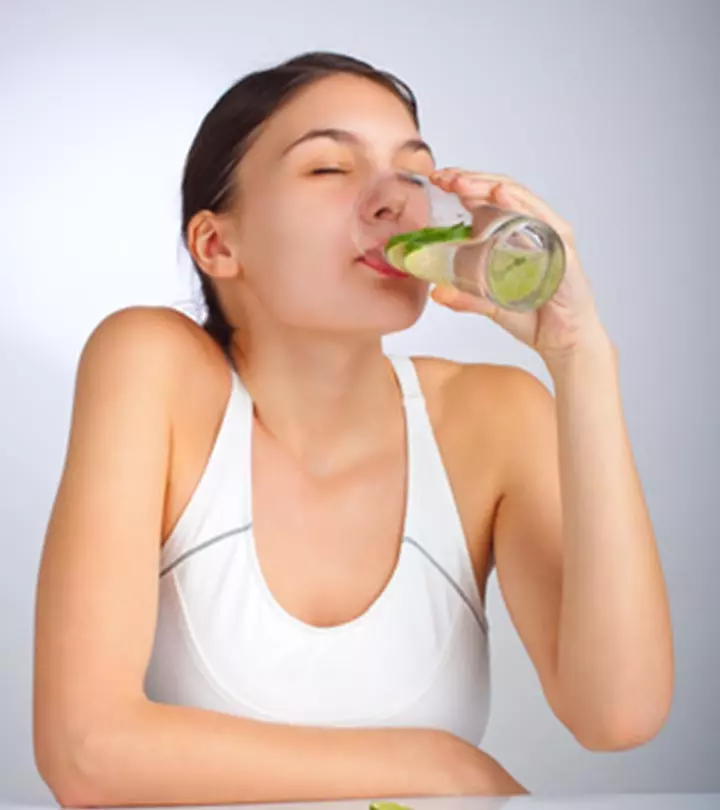
Community Experiences
Join the conversation and become a part of our empowering community! Share your stories, experiences, and insights to connect with other beauty, lifestyle, and health enthusiasts.